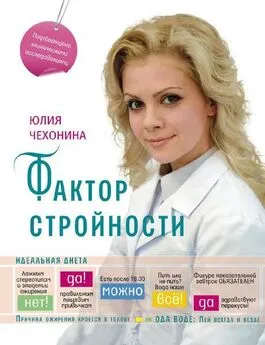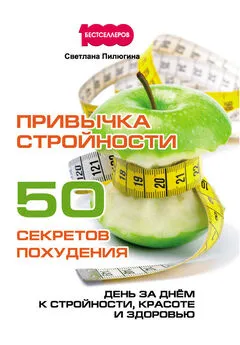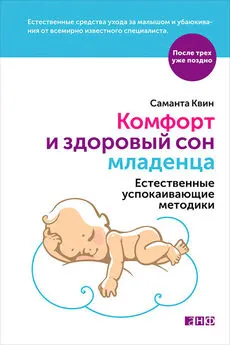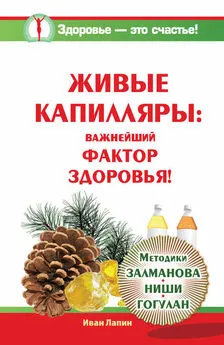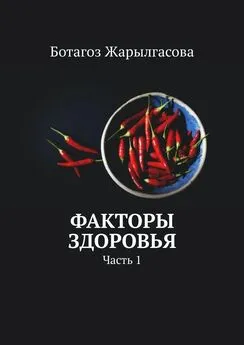Федон Линдберг - X-фактор здорового веса. Как добиться естественной стройности, позаботившись о кишечнике
- Название:X-фактор здорового веса. Как добиться естественной стройности, позаботившись о кишечнике
- Автор:
- Жанр:
- Издательство:Эксмо
- Год:2022
- Город:Москва
- ISBN:978-5-04-162122-3
- Рейтинг:
- Избранное:Добавить в избранное
-
Отзывы:
-
Ваша оценка:
Федон Линдберг - X-фактор здорового веса. Как добиться естественной стройности, позаботившись о кишечнике краткое содержание
В этой книге содержится подробная информация, как именно это происходит, а также инструкции, как влиять на состав микрофлоры, чтобы она поддерживала ваш здоровый вес.
Внимание! Информация, содержащаяся в книге, не может служить заменой консультации врача. Перед совершением любых рекомендуемых действий необходимо проконсультироваться со специалистом.
В формате PDF A4 сохранен издательский макет книги.
X-фактор здорового веса. Как добиться естественной стройности, позаботившись о кишечнике - читать онлайн бесплатно ознакомительный отрывок
Интервал:
Закладка:
70. Hlivak P, Odraska J, Ferencik M, Ebringer L, Jahnova E, Mikes Z. One-year application of probiotic strain Enterococcus faecium M-74 decreases serum cholesterol levels. Bratisl Lek Listy. 2005;106(2):67–72
71. Kadooka Y, Sato M, Imaizumi K, Ogawa A, Ikuyama K, Akai Y, Okano M, Kagoshima M, Tsuchida T. Regulation of abdominal adiposity by probiotics (Lactobacillus gasseri SBT2055) in adults with obese tendencies in a randomized controlled trial. Eur J Clin Nutr. 2010 Jun;64(6):636–43
72. Kadooka Y, Sato M, Ogawa A, Miyoshi M, Uenishi H, Ogawa H, Ikuyama K, Kagoshima M, Tsuchida T. Effect of Lactobacillus gasseri SBT2055 in fermented milk on abdominal adiposity in adults in a randomized controlled trial. Br J Nutr. 2013 Nov 14;110(9):1696–703
73. Ogawa A, Kadooka Y, Kato K, Shirouchi B, Sato M. Lactobacillus gasseri SBT2055 reduces postprandial and fasting serum non-esterified fatty acid levels in Japanese hypertriacylglycerolemic subjects. Lipids Health Dis. 2014 Feb 19;13:36
74. Luoto R, Kalliomäki M, Laitinen K, Isolauri E. The impact of perinatal probiotic intervention on the development of overweight and obesity: follow-up study from birth to 10 years. Int J Obes (Lond). 2010 Oct;34(10):1531–7
75. Luoto R, Laitinen K, Nermes M, Isolauri E. Impact of maternal probiotic-supplemented dietary counselling on pregnancy outcome and prenatal and postnatal growth: a double-blind, placebo-controlled study. Br J Nutr. 2010 Jun;103(12):1792–9
76. Laitinen K, Poussa T, Isolauri E. Nutrition, Allergy, Mucosal Immunology and Intestinal Microbiota Group. Probiotics and dietary counselling contribute to glucose regulation during and after pregnancy: a randomized controlled trial. Br J Nutr. 2009 Jun;101(11):1679–87
77. Cani PD, Joly E, Horsmans Y, Delzenne NM. Oligofructose promotes satiety in healthy human: a pilot study. Eur J Clin Nutr. 2006 May;60(5): 567–72
78. Cani PD, Lecourt E, Dewulf EM, Sohet FM, Pachikian BD, Naslain D, De Backer F, Neyrinck AM, Delzenne NM. Gut microbiota fermentation of prebiotics increases satietogenic and incretin gut peptide production with consequences for appetite sensation and glucose response after a meal. Am J Clin Nutr. 2009 Nov;90(5):1236–43
79. Erridge C, Attina T, Spickett CM, Webb DJ. A high-fat meal induces low-grade endotoxemia: evidence of a novel mechanism of postprandial inflammation. Am J Clin Nutr. 2007 Nov;86(5):1286–92
80. Herieka M, Erridge C. High-fat meal induced postprandial inflammation. Mol Nutr Food Res. 2014 Jan;58(1):136–46
81. Meinert Larsen, T. Ph.D., et.al., for the Diet, Obesity, and Genes (Diogenes) Project. Diets with High or Low Protein Content and Glycemic Index for Weight-Loss Maintenance. N Engl J Med 2010; 363:2102–2113
82. Weigle DS, Breen PA, Matthys CC, Callahan HS, Meeuws KE, Burden VR, Purnell JQ. A high-protein diet induces sustained reductions in appetite, ad libitum caloric intake, and body weight despite compensatory changes in diurnal plasma leptin and ghrelin concentrations. Am J Clin Nutr. 2005 Jul;82(1):41–8
83. Sofi, F. et al. Effect of Triticum turgidum subsp. turanicum wheat on irritable bowel syndrome: a double-blinded randomized dietary intervention trial. British Journal of Nutrition / Volume 111 / Issue 11 / June 2014
84. Crippa A, Discacciati A, Larsson SC, Wolk A, Orsini N. Coffee consumption and mortality from all causes, cardiovascular disease, and cancer: a dose-response meta-analysis. Am J Epidemiol. 2014 Oct 15;180(8):763–75
85. Ding M, Bhupathiraju SN, Satija A, van Dam RM, Hu FB. Long-term coffee consumption and risk of cardiovascular disease: a systematic review and a dose-response meta-analysis of prospective cohort studies. Circulation. 2014 Feb 11;129(6):643–59
86. Hansen, John-Bjarne; Enga, Kristin Fjeldstad. Coffee consumption and risk of venous thromboembolism. I: Coffee in health and disease prevention. Academic Press 2015 ISBN 9780124095175. s. 403–407 UiT
87. Siasos G, Oikonomou E, Chrysohoou C, Tousoulis D, Panagiotakos D, Zaromitidou M, Zisimos K, Kokkou E, Marinos G, Papavassiliou AG, Pitsavos C, Stefanadis C. Con sumption of a boiled Greek type of coffee is associated with improved endothelial function: the Ikaria study. Vasc Med. 2013 Apr;18(2):55–62
88. Ding M, Bhupathiraju SN, Chen M, van Dam RM, Hu FB. Caffeinated and decaffeinated coffee consumption and risk of type 2 diabetes: a systematic review and a dose-response meta-analysis. Diabetes Care. 2014 Feb;37(2):569–86. Review
89. Jiang X, Zhang D, Jiang W. Coffee and caffeine intake and incidence of type 2 diabetes mellitus: a meta-analysis of prospective studies. Eur J Nutr. 2014 Feb;53(1):25–38. Review
90. Huxley R, Lee CM, Barzi F, Timmermeister L, Czernichow S, Perkovic V, Grobbee DE, Batty D, Woodward M. Coffee, decaffeinated coffee, and tea consumption in relation to incident type 2 diabetes mellitus: a systematic review with meta-analysis. Arch Intern Med. 2009 Dec 14;169(22):2053-63. doi: 10.1001/archinternmed.2009.439. Review.
91. Coffee consumption and blood homocysteine, Institute for scientific information on coffee: http://coffeeandhealth.org/topic-overview/coffee-consumption-and-blood-homocysteine/
92. Cryan JF, Dinan TG. Mind-altering microorganisms: the impact of the gut microbiota on brain and behaviour. Nat Rev Neurosci. 2012 Oct;13(10):701–12. Review
93. Maes M, Berk M, Goehler L, Song C, Anderson G, Gałecki P, Leonard B. Depression and sickness behavior are Janus-faced responses to shared inflammatory pathways. BMC Med. 2012 Jun 29;10:66
94. Logan AC, Katzman M. Major depressive disorder: probiotics may be an adjuvant therapy. Med Hypotheses. 2005;64(3):533–8
95. Rao AV, Bested AC, Beaulne TM, Katzman MA, Iorio C, Berardi JM, Logan AC. A randomized, double-blind, placebo-controlled pilot study of a probiotic in emotional symptoms of chronic fatigue syndrome. Gut Pathog. 2009 Mar 19;1(1):6
96. Messaoudi M, Lalonde R, Violle N, Javelot H, Desor D, Nejdi A, Bisson JF, Rougeot C, Pichelin M, Cazaubiel M, Cazaubiel JM. Assessment of psychotropic-like properties of a probiotic formulation (Lactobacillus helveticus R0052 and Bifidobacterium longum R0175) in rats and human subjects. Br J Nutr. 2011 Mar;105(5):755–64
97. Sherwin E, Rea K, Dinan TG, Cryan JF. A gut (microbiome) feeling about the brain. Curr Opin Gastroenterol. 2016 Mar;32(2):96–102
98. Kelly JR, Kennedy PJ, Cryan JF, Dinan TG, Clarke G, Hyland NP. Breaking down the barriers: the gut microbiome, intestinal permeability and stress-related psychiatric disorders. Front Cell Neurosci. 2015 Oct 14;9:392
99. Dinan TG, Cryan JF. The impact of gut microbiota on brain and behaviour: implications for psychiatry. Curr Opin Clin Nutr Metab Care. 2015 Nov;18(6):552–8
100. Dinan TG, Stilling RM, Stanton C, Cryan JF. Collective unconscious: how gut microbes shape human behavior. J Psychiatr Res. 2015 Apr;63:1–9
101. Wall R, Cryan JF, Ross RP, Fitzgerald GF, Dinan TG, Stanton C. Bacterial neuroactive compounds produced by psychobiotics. Adv Exp Med Biol. 2014;817:221–39
102. Dinan TG, Stanton C, Cryan JF. Psychobiotics: a novel class of psychotropic. Biol Psychiatry 2013 Nov 15;74(10):720–6
103. Messaoudi M, Lalonde R, Violle N, Javelot H, Desor D, Nejdi A, Bisson JF, Rougeot C, Pichelin M, Cazaubiel M, Cazaubiel JM. Assessment of psychotropic-like properties of a probiotic formulation (Lactobacillus helveticus R0052 and Bifidobacterium longum R0175) in rats and human subjects. Br J Nutr. 2011 Mar;105(5):755–64
104. Tillisch K, Labus J, Kilpatrick L, Jiang Z, Stains J, Ebrat B, Guyonnet D, Legrain-Raspaud S, Trotin B, Naliboff B, Mayer EA. Consumption of fermented milk product with probiotic modulates brain activity. Gastroenterology 2013 Jun;144(7):1394–401, 1401. e1–4
105. Keisersnitt – faktaark med statistikk. Folkehelseinstituttet. https://www.fhi.no/fp/svangerskap/gravide-og-fodende-kvinners-helse/keisersnitt-faktaark-med-statisti/Kalliomäki M, Collado MC, Salminen S, Isolauri E. Early differences in fecal microbiota composition in children may predict overweight. Am J Clin Nutr. 2008 Mar;87(3):534–8
106. Cabrera-Rubio R, Collado MC, Laitinen K, Salminen S, Isolauri E, Mira A.The human milk microbiome changes over lactation and is shaped by maternal weight and mode of delivery. Am J Clin Nutr. 2012 Sep;96(3): 544–51
107. Collado MC, Laitinen K, Salminen S, Isolauri E. Maternal weight and excessive weight gain during pregnancy modify the immunomodulatory potential of breast milk. Pediatr Res. 2012 Jul;72(1):77–85
108. «Vi lever lenger enn før». Folkehelseinstituttet. https://www.fhi.no/nettpub/hin/befolkning-og-levealder/levealderen-i-norge-folkehelserap/#vi-lever-lenger-enn-foer
109. Siamak Yazdankhah, Jørgen Lassen, Tore Midtvedt, Claus Ola Solberg. «Historien om antibiotika». http://tidsskriftet.no/article/3112767
110. Strachan, D. P. (1989). Hay fever, hygiene, and household size. BMJ 299 (6710): 1259–60.
111. Strachan, D. (2000). Family size, infection and atopy: The first decade of the ’hygiene hypothesis’. Thorax 55 (90001): 2S
112. Stene LC, Nafstad P. Relation between occurrence of type 1 diabetes and asthma. Lancet 2001;357:607
113. Raison CL, Lowry CA, Rook GAW. Inflammation, sanitation and consternation: loss of contact with co-evolved, tolerogenic micro-organisms and the pathophysiology and treatment of major depression. Arch Gen Psychiatry 2010;67(12) 1211–24
114. Rook GAW, Lowry CA, Raison CL. Microbial Old Friends, immunoregulation and stress resilience. Evolution, Medicine and Public Health. 2013: 46–64
115. Rook, G. A. W.; Lowry, C. A.; Raison, C. L. (2013). Microbial ’Old Friends’, immunoregulation and stress resilience. Evolution, Medicine, and Public Health 2013: 46–64
116. Rook GA, Dalgleish A (2011). «Infection, immunoregulation and cancer”. Immunological Reviews 240: 141–59
117. Giovanni Musso, Roberto Gambino, Maurizio Cassader. Obesity, Diabetes, and Gut Microbiota: The hygiene hypothesis expanded? Diabetes Care. 2010 October; 33(10): 2277–2284
118. Shengli Ding, Pauline K. Lund. Role of intestinal inflammation as an early event in obesity and insulin resistance. Curr Opin Clin Nutr Metab Care. 2011 July; 14(4): 328–333
119. Ningwen Tai, F. Susan Wong, Li Wen. The role of gut microbiota in the development of type 1, obesity and type 2 diabetes mellitus. Rev Endocr Metab Disord. 2015 March; 16(1): 55–65
120. Ngoc P. Ly, Augusto Litonjua, Diane R. Gold, Juan C. Celedón. Gut Microbiota, Probiotics, and Vitamin D: Interrelated Exposures Influencing Allergy, Asthma, and Obesity? J Allergy Clin Immunol. 2011 May; 127(5): 1087–1094
121. Les Dethlefsen, Sue Huse, Mitchell L Sogin, David A Relman. The Pervasive Effects of an Antibiotic on the Human Gut Microbiota, as Revealed by Deep 16S rRNA Sequencing. PLoS Biol. 2008 November; 6(11): e280
122. Dethlefsen L, Relman DA. Incomplete recovery and individualized responses of the human distal gut microbiota to repeated antibiotic perturbation. Proc Natl Acad Sci U S A. 2011 Mar 15;108 Suppl 1:4554–61
123. Penders J, Thijs C, Vink C, Stelma FF, Snijders B, Kummeling I, van den Brandt PA, Stobberingh EE. Factors influencing the composition of the intestinal microbiota in early infancy. Pediatrics 2006 Aug;118(2):511–21
124. Sharland M; SACAR Paediatric Subgroup. The use of antibacterials in children: a report of the Specialist Advisory Committee on Antimicrobial Resistance (SACAR) Paediatric Subgroup. J Antimicrob Chemother. 2007 Aug;60 Suppl 1:i15–26
Читать дальшеИнтервал:
Закладка:

